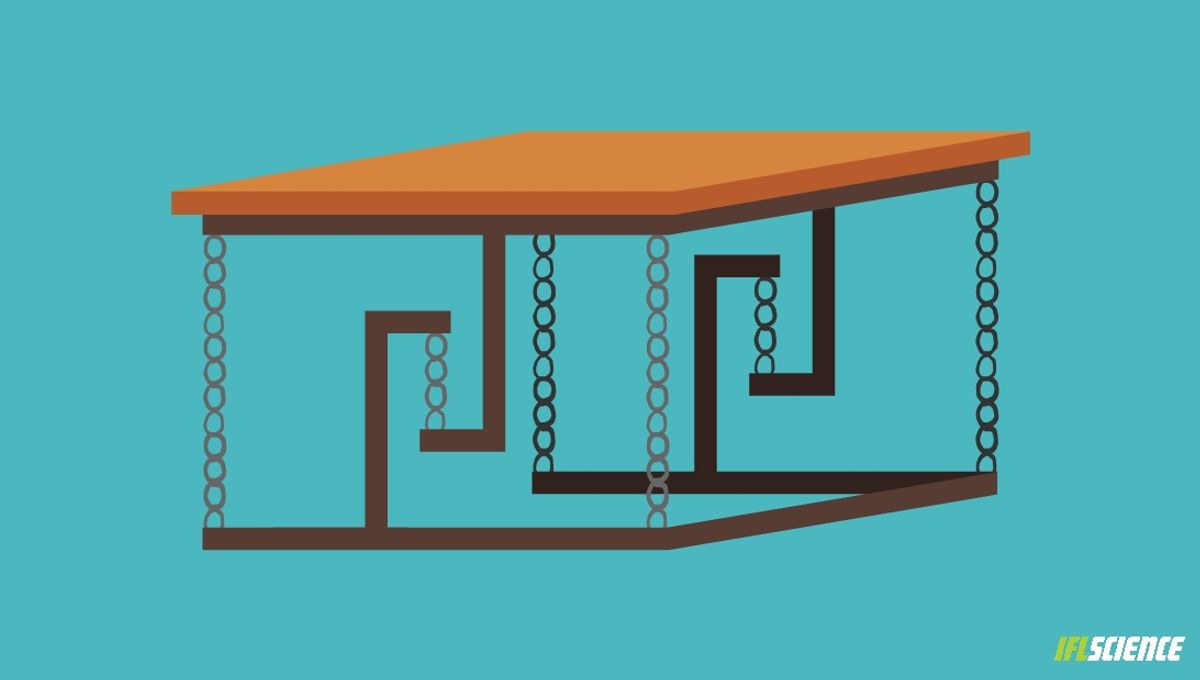
Tables get dull pretty quickly. Sure they may have a nice pattern on them, or be made of some particularly fancy wood, but once you’ve seen one, you’ve basically seen them all. Just variation after variation of the “big flat thing on top of some legs” model which hasn’t really changed since we first started using them.
But spend long enough on the Internet and you will see the fancy design – known as a Tensegrity Table – somehow kept upright despite no obvious lifting from legs.
The tables are not held up by magic, so what is keeping them upright? And would they be of any practical use?
As you’ll have intuited at some point, string or malleable wires are not great for pushing. Nobody has ever asked somebody else to “grab that string and help me give this a push”, because of the obvious inherent floppiness of string.
These tables are kept upright by the pulling of the string in tension. The tables work with string, paper and harder wires too, though they can only lift what the string is capable of lifting before it will break.
The four wires or strings placed at the corners of the tables are there for overall stability, rather than to provide any upwards force to keep the table upright. The easiest way to see what is keeping it up is to imagine the four strings are removed. If you were to keep the table in the same position and push down evenly (and not too hard to break the wire or string) it would remain where it was, and you can see why; you are simply pulling on the string between the two solid arms, preventing you from moving it downwards further.
“Two wires that are attached to the bottom and one to the top […] provide compression resistance,” Jerry explains on the YouTube channel funbygum. “The wires are in compression and the center string is in tension. These three components provide the support between the top and the bottom.”
While awesome, they are not exactly practical, their strength being dictated by the string, and are unstable to boot.
“My table legs are simply string in tension that provide mechanical integrity. Of course this table had to be put together and fine-tuned so this so that the string tension is the same all the way around otherwise the table would sway and slope,” he added, “because of unequal tension from one side to the other.”
Source Link: How Do These "Impossible" Tensegrity Tables Actually Work?